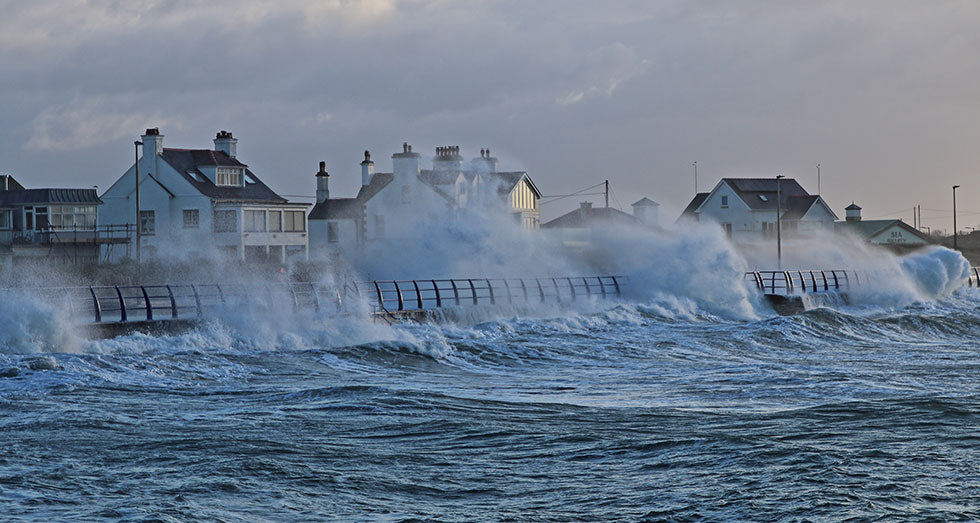As long as a storm isn’t right on your doorstep, there’s still time to prepare. These installments about hurricane preparedness will remind you of ways to stay safe and secure before, during, and after one of these destructive storms.
Part One: Advance Planning and Preparation

Evacuation
- Plan potential evacuation routes and destinations in case you must leave home.
- Find out about your area’s preferred evacuation routes, but also scope out some back-road shortcuts that might help you blend into the stream of traffic more quickly. (Realize that during evacuations, most local freeway lanes may be dedicated to one-way, out-bound traffic.)
- Have an idea (or two) of potential destinations. Replace out where designated shelters are planned—schools, churches, etc.—and also obtain the phone numbers and locations of hotels and motels along the way, but recognize that they will fill up fast and may not be able to honor reservations.
- Are you lucky enough to have hospitable family or friends far enough inland to be out of danger’s way? Shamelessly beg to stay with them for the duration of the storm.
- Once hurricanes make landfall most Atlantic hurricanes begin to tend toward the north and eventually back toward the east. If you can head west and south you should be in relatively safe territory, although the rain bands can extend outward for many miles. The strongest and most dangerous part of the storm is to the north and east of the calm eye as it comes ashore.
![]()
Utilities and Weather Tracking
Teach responsible family members how to turn off utilities and tune into NOAA Weather Radio for up-to-the-minute storm tracking and instructions. You do have a battery-powered radio that receives the NOAA band, don’t you? If not, get one! The NOAA broadcasts are found in the VHF public service bands at seven frequencies between 162.4 and 162.550.

Emergency Supplies
- If you haven’t already done so, obtain the following items:
- Plenty of bottled water
- Flashlights, lanterns, 100-hour candles
- Extra batteries
- Car phone chargers
- A first-aid kit
- Emergency food items that can be used at home or easily taken with you
- Essential medications
- Baby items if needed
- Pet items if needed
From my own experience: DO NOT wait until a storm is announced to shop for these things, as store shelves will empty unbelievably fast; all that may be left to buy are pickled onions and hair-coloring! Stores usually have only about three days’ worth of supplies at the best of times, and when a hurricane threatens is definitely not the best of times.
Appropriate food items to store include:
- Food bars (granola or high-calorie, high-nutrition food bars)
- Canned meat, beans, cheese spread, and fruit
- Well-packaged crackers
- A selection of MREs (Meals Ready to Eat) such as those used by the military
- Freeze-dried or dehydrated fruits
- Small packages of gelatin, juice, or pudding that do not require refrigeration
- Individual servings of cold cereal and powdered milk with enough water to reconstitute it
Minimize the use of alcohol, soft drinks, and extremely salty items, since they make you thirstier and you’ll go through your water storage faster. Instead, encourage the family to drink water and juice.

Communications
- Decide ahead of time on a family communication plan—designate a place to meet if you get separated, and choose someone to be your contact person for everyone to call to report in.
- An out-of-town contact is best to act as a sort of clearing-house for your calls, for two reasons: they won’t be as impacted by the storm as you are, and if phone lines and cell service is overloaded or fails, long-distance lines are restored more quickly than local ones. Be sure all family members have the phone number of that person—memorized as well as written down.
- Teach family members who are old enough to call 911 if needed. Discuss some situations when they might need to call 911 (if someone is severely injured or unconscious, for example).
If you live in an area that is prone to hurricanes, taking these steps can help create some sense of order amid the chaos if a storm ever hit your home or community.
Preparing an evacuation, communication, and weather tracking plan now will give your family the mental preparedness they need, and gathering food and other emergency supplies will provide for their physical needs in a time of crisis.
More Posts in This Mini-Series:
Part Two: Prepare Your Home, Pets, and Property
Part Three: Under a Hurricane Watch
Part Four: Under a Hurricane Warning Part Five: After the Storm


1 comment
Emergency Essentials
Survivalist Food Storage, it's true that having advance warning is ideal. And having supplies on hand at the ready is good practice for any possible disaster, and will hopefully help mitigate the anxiety and stress that natural disasters bring.